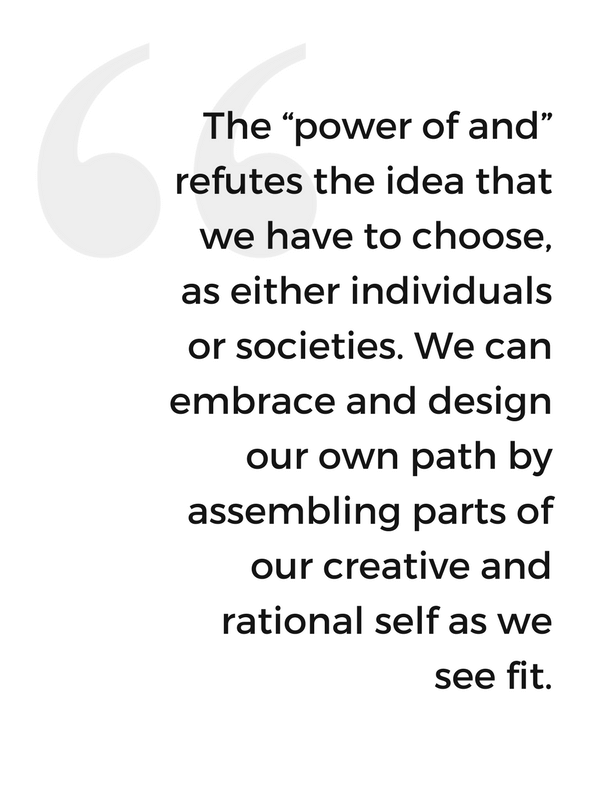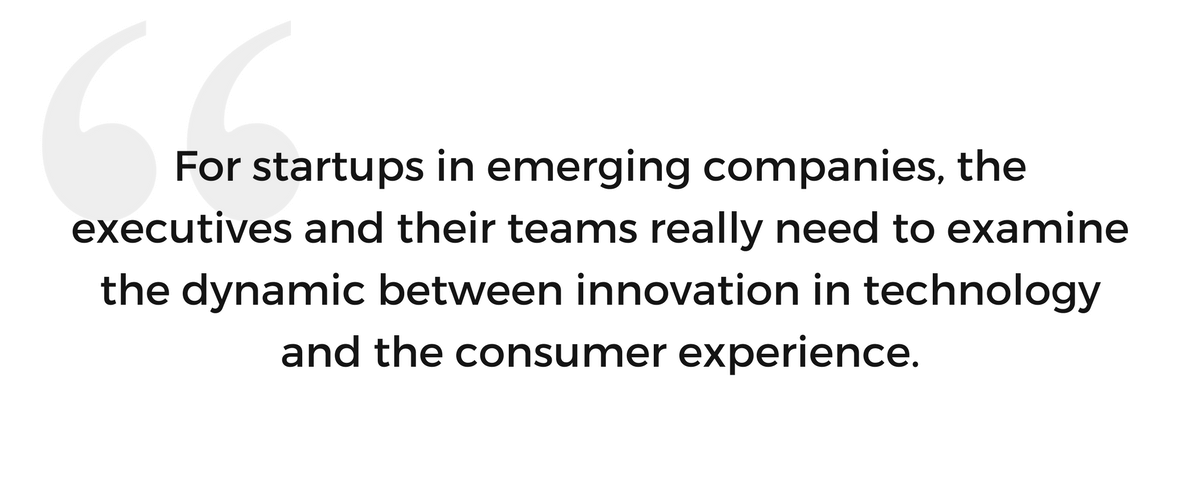Historically, there has been an obvious separation between technology and consumer brand companies. To date, this invisible line has divided all sorts of industries and people.
Right now, I believe we are in the heart of a significant paradigm shift – a fundamental upheaval that will change the rules, methods, ritual of interaction and the overall approach of not just small business, but all business.
Many companies have been forced to pick sides, saying they only focus on tech or only focus on consumers. Lately, though, what we have seen is that this is an antiquated and effectively dead way of looking at the world. Instead, companies that embrace what we call the “Power of And” are the companies of the future.
The Power of And
In my book Heed Your Call, I set out to bring to life the concept of the “power of and,” where I suggest that you can simultaneously have tattoos and live a bohemian lifestyle while also being a highly astute businessperson. You can wear a suit, live in a posh part of town, drive a shiny foreign car and still take a month-long sabbatical to meditate in an ashram. These symbols are not mutually exclusive. In the new and changing world we live in, choosing one type of “lifestyle” is no longer required and expressing all parts of your character is welcome.
The “power of and” refutes the idea that we have to choose, as either individuals or societies. We can embrace and design our own path by assembling parts of our creative and rational self as we see fit, and most likely for the better. One can visibly see these forces at work in what many are referring to as “the maker movement.”

How does the “power of and” translate into business? Consider Apple. Is Apple a technology or consumer brand? Their products have all the technological bells and whistles to really thoughtfully crush it in terms of our need as consumers to have advanced capabilities built with a killer UX interface.
While clearly a tech company, Apple is also a consumer brand because people love the look and feel of an iPhone in their hand and the promise of a brand they trust. Many people don’t even take the time to check if the competitive products have more or less technical ability; they simply want to pull an Apple device out of their pocket or suitcase and make a personal brand statement. Apple has effectively turned customers into “iPhone people,” which has nothing to do with the technical interworking of their phone, but rather with the pride in identifying with a brand.
The same can be said about Nike. If you meet with most of the senior employees, they’ll say that Nike is an experience company that sells technology and innovation just as much as product. This need to embrace “and” is the future.
Even B2B Companies are B2C
Even B2B companies, like Intel, are ultimately B2C. One of Intel’s main problems is its perception as a tech company: “We make chips, servers, and stuff that goes inside other things.” People don’t find this aspirational; they won’t tell their friends about their new Intel chip, but they will show people their new iPhone 8 all day long. Cultivating that brand connection is a critical part of building a thriving business in this day and age.
If you’re not helping a consumer like Dell succeed by adding value, enhancing their brand story, and allowing Dell’s customers to want their products because Intel is inside, then Dell can negotiate on a commodity basis. In this era, you want to build a company that’s more than just a commodity.
 GORE-TEX is a great example of this. They tell a story about being a performance innovation house, constantly in pursuit to perfect their waterproof, breathable and durable material, so that you as the consumer can feel confident during your next adventure. If you go into any North Face store, for example, and see something with GORE-TEX on it, you’re more likely to buy that piece and pay more money. Intel needs to strive for that same halo effect in order to survive in the long-term.
GORE-TEX is a great example of this. They tell a story about being a performance innovation house, constantly in pursuit to perfect their waterproof, breathable and durable material, so that you as the consumer can feel confident during your next adventure. If you go into any North Face store, for example, and see something with GORE-TEX on it, you’re more likely to buy that piece and pay more money. Intel needs to strive for that same halo effect in order to survive in the long-term.
Yin and Yang
Tech companies need to think about their brand promise, how to deliver on that promise, and how to show up in market with a unique look and feel for various distribution channels. Basically, they have to think like consumer brand companies. Otherwise, they won’t be capable of maximizing their enterprise value or shareholder return.
Likewise, consumer brands that are not integrating innovation into all touch points are going to lose emerging consumers who demand both and want their products to look and feel cool, relevant and experiential.
The sale of Whole Foods Market to Amazon is a prime example of a company that is taking innovation to the next level. Months before the sale, Amazon opened a cashier-less convenience store in Seattle to test out the concept of a completely automated grocery shopping. The idea is to charge the customers credit card as soon as they pass through an airport-style scanner that catalogs all items in their basket. By buying up a large high-end grocery chain that shares a similar consumer group as their preexisting Amazon Fresh service, they are preparing to make a huge leap in the technology and experience of grocery shopping.
For startups in emerging companies, the executives and their teams really need to examine the dynamic between innovation in technology and the consumer experience. Embrace the “power of and,” and make this a core part of go-to-market.



